We make the blanks correctly: what kind of salt is best to salt cabbage
Novice cooks do not think about the importance of salt in preservation and use the one that is at hand. The consequence is a tasteless or spoiled workpiece. In the article we will tell you which salt is better to salt cabbage and how to do it correctly.
The content of the article
The importance of choosing the right salt for pickling cabbage
The quality of sauerkraut is influenced by its type and variety.... Depending on these characteristics, the fermentation process takes place in different ways.
When choosing the "wrong" salt, the workpiece is peroxide, the leaves are soft and unfit for consumption.
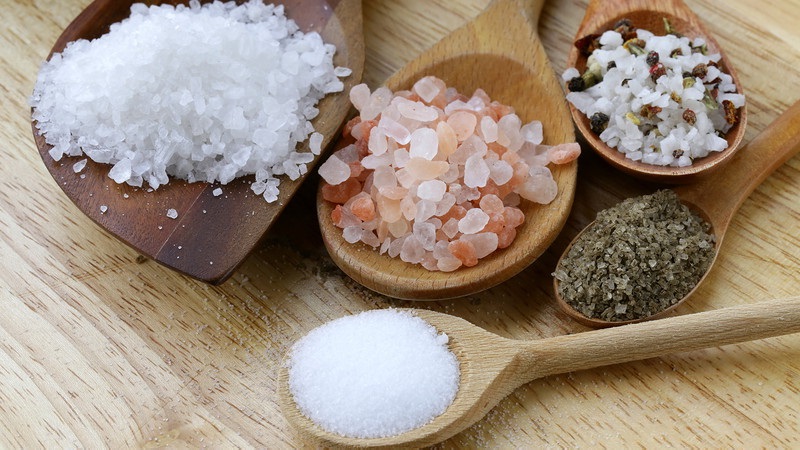
When buying a product, look at the packaging:
- name;
- mode of production;
- grade;
- grind number;
- than enriched;
- additives;
- recommendations for use;
- manufacturer's name.
Take a note:
Delicious recipes for sauerkraut with apples for the winter
Delicious sauerkraut recipes without added sugar
Simple, quick and delicious recipes for salting cabbage for the winter
Choosing the type of salt
The quality of the future workpiece depends on the type of product.
Food
Cooking food - mineral... In appearance - odorless white or transparent crystals, but with a pronounced taste.
Salt - sodium chloride: Na - 39.4%, CI - 60.0%.
The chemical composition of table salt (per 100 g):
- potassium - 9 mg;
- calcium - 368 mg;
- magnesium - 22 mg;
- sodium - 38,710 mg;
- sulfur - 180 mg;
- phosphorus - 75 mg;
- chlorine - 59690 mg;
- iron - 2.9 mg;
- cobalt - 15 mcg;
- manganese - 0.25 mg;
- copper - 271 mcg;
- molybdenum - 110 mcg;
- selenium - 0.1 μg;
- fluorine - 2 μg;
- zinc - 0.6 mg.
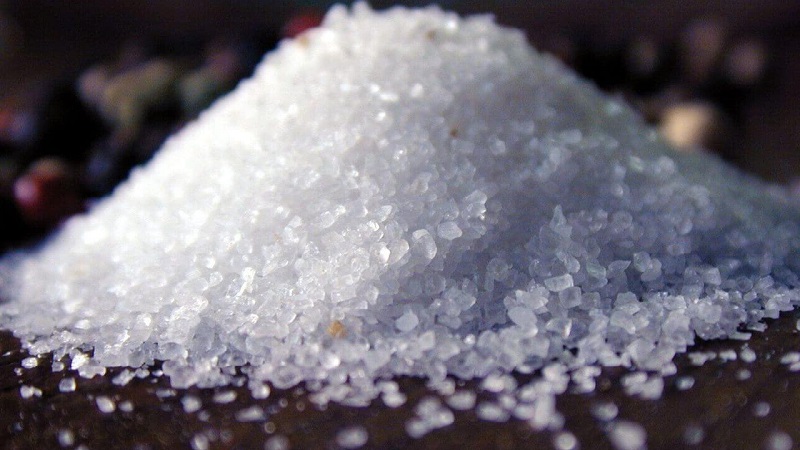
By origin and method of extraction:
- Stone... Extracted in mines, quarries. Contains few impurities, up to 99% sodium chloride. Has low humidity.
- Evaporating... Natural or artificial brines are evaporated. Natural ones are extracted from the earth, artificial ones are obtained by dissolving rock salt in wells. Differs in low hygroscopicity, high content of sodium chloride, small amount of impurities.
- Self-deposited... Ozernaya, it is mined from the bottom of salt lakes. Precipitated, it forms layers. Natural impurities - silt, sand, clay - give the color a yellow, gray tint. It is characterized by high humidity.
- Sadochnaya... Extracted from the water of the oceans, seas. Water is diverted to large, but shallow artificial pools. Natural evaporation takes place, the salt precipitates. Sadochnaya has many shades due to the large amount of impurities.
According to GOST 51574-2000 cookery is divided into four varieties depending on the purity of the product, elements of chemical composition, particle size:
- Extra. The product is white, without impurities. Particle size within 0.8 mm.
- Higher. Pure white crystals up to 1.2 mm in size.
- The first. Grayish grains up to 4 mm. In addition to sodium chloride, other minerals may be present.
- Second. The closest in composition to natural.
Consumption rate salt for humans - 11-15 g per day.
Benefits of eating table salt:
- has a rich mineral composition;
- has antiseptic properties;
- adds flavor to dishes, acts as a flavor enhancer.
Disadvantage: excess leads to the development of diseases of the cardiovascular system and gastrointestinal tract.
Marine
Salt obtained by the natural process of "evaporation" from the sea, called marine.
Interesting! The marine product has been mined for over 4000 years.
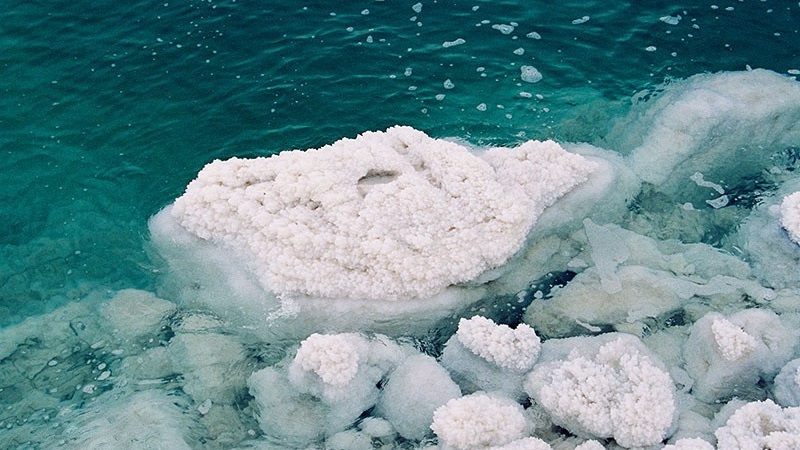
Chemical composition (based on 100 g):
- potassium - 9 mg;
- calcium - 368 mg;
- magnesium - 22 mg;
- sodium - 38,710 mg;
- sulfur - 180 mg;
- phosphorus - 75 mg;
- chlorine - 59690 mg;
- iron - 2.9 mg;
- cobalt - 15 mcg;
- manganese - 0.25 mg;
- copper - 271 mcg;
- molybdenum - 110 mcg;
- zinc - 0.6 mg.
Real sea salt is black, yellow or pink... Bleached has no beneficial qualities.
Characteristics of sea salt:
- has a rich mineral composition;
- used in the food, chemical industry, medicine;
- iodine, which is part, does not lose its beneficial properties over time.
When preparing dishes, it is recommended to replace the cookery with the seafood - the body will receive more useful trace elements.
Iodized
Iodized - a type of table salt to which iodide and potassium iodate have been artificially added... This variety appeared in the 60s of the XX century.
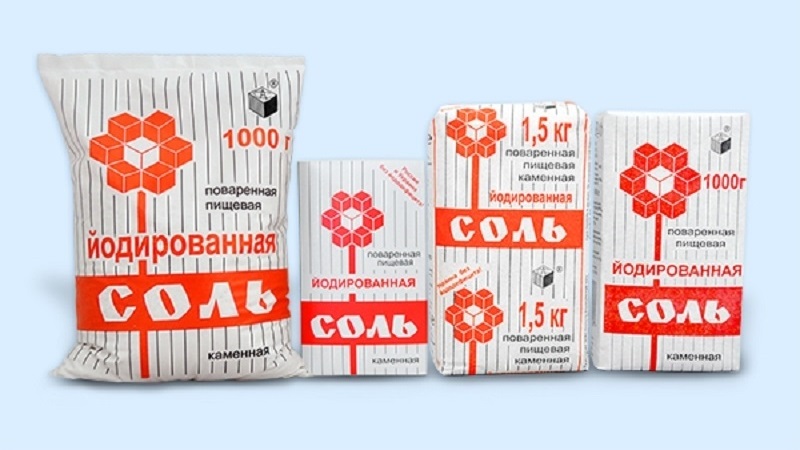
Chemical composition (based on 100 g):
- calcium - 368 mg;
- magnesium - 22 mg;
- sodium - 38,710 mg;
- potassium - 9 mg;
- phosphorus - 75 mg;
- chlorine - 59690 mg;
- sulfur - 180 mg;
- iron - 2.9 mg;
- zinc - 0.6 mg;
- iodine - 4000 mg;
- copper - 271 mg;
- manganese - 0.25 mg;
- cobalt - 0.015 mg.
Inexperienced housewives are often interested in is it possible to ferment, pickle, salt cabbage with iodized salt... The answer is no. Lactic acid bacteria do not multiply with a large amount of iodine, and the fermentation process is disrupted. The cabbage is slimy, not crispy. Over time, this leads to damage to the workpiece.
Benefits of iodized salt:
- saturates the body with iodine;
- participates in the prevention of thyroid diseases.
disadvantages:
- evaporates completely at high temperatures;
- cannot be used for salting.
Grinding selection
Salt is fine or coarse (coarse) grinding. The size of the salt affects the fermentation process... The grind number is indicated for the extra, first and second grades.
| Grind number | Crystals size | Content of large crystals |
| 0 | up to 1.2 mm | not more than 10% |
| 1 | from 1.2 mm to 2.5 mm | not more than 3% |
| 2 | from 2.5 mm to 4 mm | not more than 5% |
| 3 | from 4 mm | 15% |
Large / stone
Refers to sedimentary minerals... Consists of sodium chloride and impurities. In nature, it looks like a stone. After processing and cleaning, it takes the form of a familiar salt.
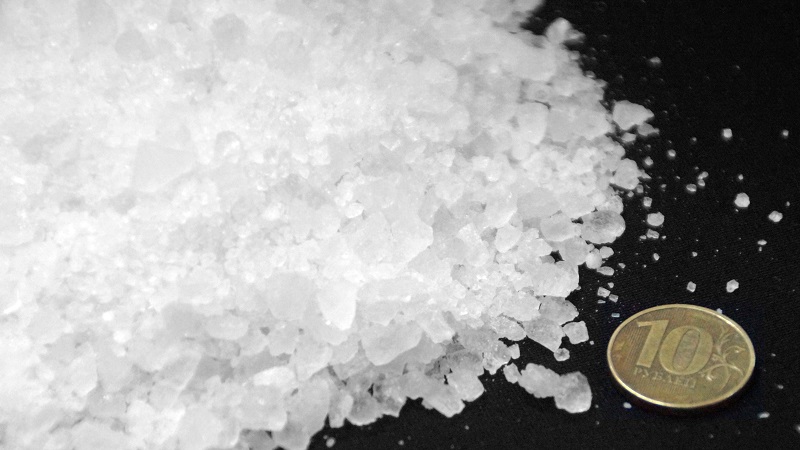
In natural form, it happens:
- transparent;
- opaque, but translucent;
- white with glass luster.
Reference. Large deposits of rock salt in Russia are Solikamskoye, Iletskoye, Irkutskoye.
The composition of impurities is different depending on the deposit., therefore, the color of the substance is also different:
- iron oxide - yellow, red;
- decomposed organic matter - from dark brown to black;
- clay - gray;
- potassium chloride - blue, lilac.
Read also:
Small / extra
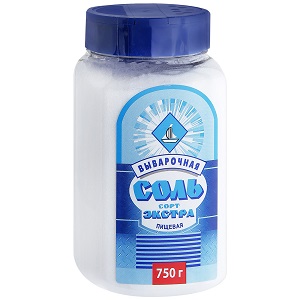 For the "Extra" grade, the grind number is not indicated... This is the finest salt.
For the "Extra" grade, the grind number is not indicated... This is the finest salt.
The production technology consists in drying at temperatures up to 600 ° C. To obtain snow-white crystals, bleaches are used. After thermal and chemical processes, some of the useful properties of the substance are lost.
To increase its benefits, it is artificially enriched - an iodized and fluorinated product is made.
The best salt for pickling cabbage
Of all types for salting cabbage suitable for medium and coarse stone.
Its advantages:
- large crystals dissolve more slowly - the fermentation process occurs gradually, the moderate effect of lactic acid does not destroy the crispy cabbage leaf, does not make it soft;
- contains a large number of impurities - more useful elements;
- increases the shelf life of the workpiece.
Optimal amount of salt
Experienced housewives for pickling cabbage take 30 g of coarse or medium-sized table salt per 1 kg of cabbage.
If sea salt is used for salting, then the amount is halved: 15 g per 1 kg of cabbage.
Attention! With a lack of salt, the fermentation process does not begin, and an excess makes the cabbage sour.
Correct salting algorithm
Stages of correct salting:
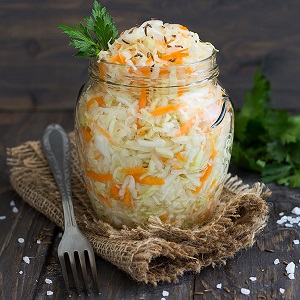 They take cabbage of late varieties - it is distinguished by crispy, juicy leaves, strong heads of cabbage.
They take cabbage of late varieties - it is distinguished by crispy, juicy leaves, strong heads of cabbage.- The forks are cleaned of the upper leaves, cut into two parts, and the stump is removed.
- If the cabbage is clean, without insects, signs of decay, then it is chopped.
- If small insects are found inside, the head of cabbage is divided into leaves and washed under running water. Another way - the halves of the head of cabbage are dipped in salted water for 2-3 minutes.
- Carrots are washed, peeled, rubbed on a coarse grater.
- Mix vegetables in a large, wide container.
- Knead until the first juice.
- Add salt, mix.
- They put the load.
At room temperature, cabbage is fermented for 3-4 days... Every day, the mass is pierced with a wooden stick in several places to release carbon dioxide and the foam is removed. It is the presence of foam on the surface that suggests that it is time to pierce the cabbage.
The finished product is transferred to clean and dry glass jars... Put away in a cool place.
Conclusion
When preparing winter preparations, quality products are chosen. To pickle vegetables, use the "right" salt. Experienced housewives advise buying medium and coarse cooked stone. The optimal amount is 30 g of salt per 1 kg of cabbage.
Sea salt is allowed for salting. It contains the most useful minerals and trace elements. It tastes more salty than traditional cooking. When used, the amount is halved.